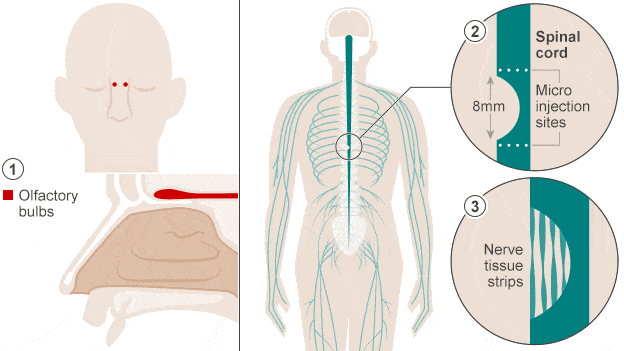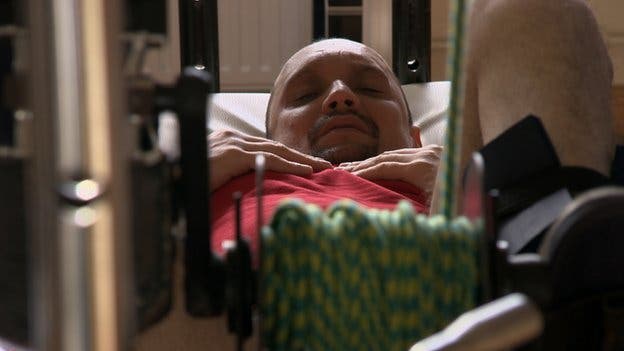Regeneration of the spinal chord following a paralyzing injury was thought to be impossible, but groundbreaking efforts stirred by surgeons in Poland and Britain have turned this paradigm upside down. A team of dedicated surgeons and scientists transplanted cells from the nasal cavity of a patient who had been paralyzed from the waist down for more than two years into his spinal chord. Today, a few years later following the procedure, the patient is able to walk with the use of a frame, an unthinkable prospect not too long ago. Though the researchers themselves are reserved (the procedure needs to be repeated on more similar cases), results so far are most promising.
Regenerating the spinal chord using nose cells

Darek Fidyka, 40, became paralyzed after being repeatedly stabbed in the back in 2010. Despite many months of intensive care, Darek showed little signs of recovery. Luckily, he got involved with this experimental project which changed his life forever.
“I think it’s realistic that one day I will become independent,” Fidyka says.
“What I have learned is that you must never give up but keep fighting, because some door will open in life.”
So, why cells from the nose? We’ve written in the past about how incredible the biological system that enables smell is, and it’s only recently that we’re beginning to uncover its secrets. Each time we inhale a breath of fresh air, molecules that represent different odors come in contact with nerve cells lined throughout the nose. These transmit messages to our olfactory bulbs – at the very top of the nasal cavity, sitting at the base of the brain. Because of continued stress, these cells are regularly damaged and must be replaced. This process of regeneration is made possible by olfactory ensheathing cells (OECs), which provide a pathway for the fibres to grow back. The complex neural circuitry responsible for our sense of smell is the only part of the nervous system that regenerates throughout adult life, and scientists have been trying for a long while to exploit this mechanism.
[ALSO SEE] White smell – the neutral fragrance discovered by scientists
A novel surgery

The first proven signs that this sort of idea might actually work came in 2012, when ZME Science reported how Cambridge researchers restored movement in the hind legs of 23 dogs after they transplanted nerve cells from the animals’ noses.
In the first part of the delicate procedure described in Cell Transplantation, doctors first removed one of the patient’s olfactory bulbs and grew the cells in culture. Two weeks later the culture grew to house some 500,000 cells, which were transplanted into the spinal cord via some 100 micro-injection directed above and below the site of injury. Four strips of nerve tissue were placed across an 8mm gap in the spinal cord.
The first signs of improvement showed three months later, when the patient noticed increased muscle mass in his left thigh. Throughout this time and later, Fidyka continued his normal physical rehabilitation program – five hours per day, five days a week. Six months later, the patient made his first steps along parallel bars, using leg braces and the support of a physiotherapist. Two years later, Fidyka can now walk by himself outside the rehabilitation center with the support of a frame. The patient has also regained, in part, bladder, bowel and sexual function.
Dr Pawel Tabakow, consultant neurosurgeon at Wroclaw University Hospital, who led the Polish research team, said: “It’s amazing to see how regeneration of the spinal cord, something that was thought impossible for many years, is becoming a reality.”
The scientists believe the OECs act as a pathway that direct nerve cells in the spinal chord to regenerate, while the nerve grafts acts like a neural bridge connecting the severed chord. Most of the repair of Mr Fidyka’s spinal cord was done on the left side, where there was an 8mm gap, which serves to explain why his left thigh was more pronounced and recovered quicker.
No less a major medical breakthrough, the procedure might be widely applied to help some of 3 million paralyzed all over the world walk on their own two legs again. The team is cautious, however. Depending on funding, they hope to repeat the procedure on ten more patients from Poland and the UK. If similar results can be reported, a new age of medicine might dawn upon us.


